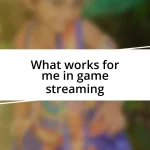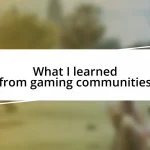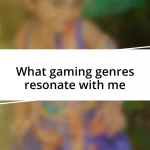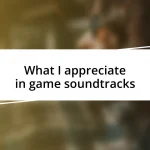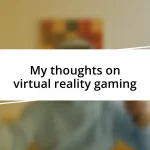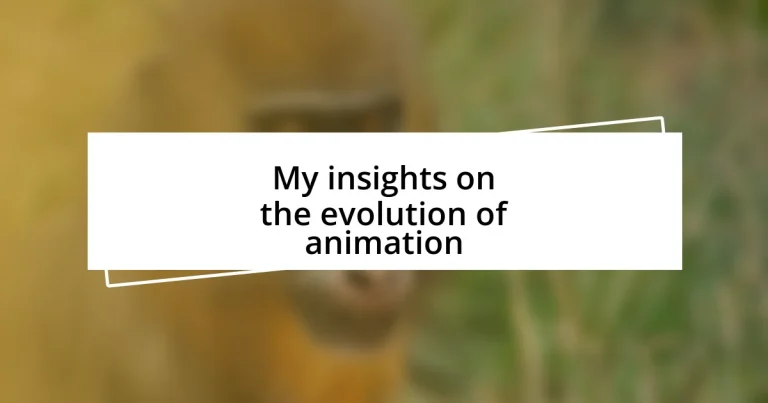Key takeaways:
- The introduction of sound in animation, marked by Disney’s “Steamboat Willie” in 1928, revolutionized the viewer experience by combining visual and auditory elements.
- The first entirely CGI film, “Toy Story,” released in 1995, redefined animation, showcasing the limitless possibilities of computer-generated imagery.
- Current trends emphasize representation and inclusivity in animated content, alongside the rise of VR and AR, transforming how stories are told and experienced.
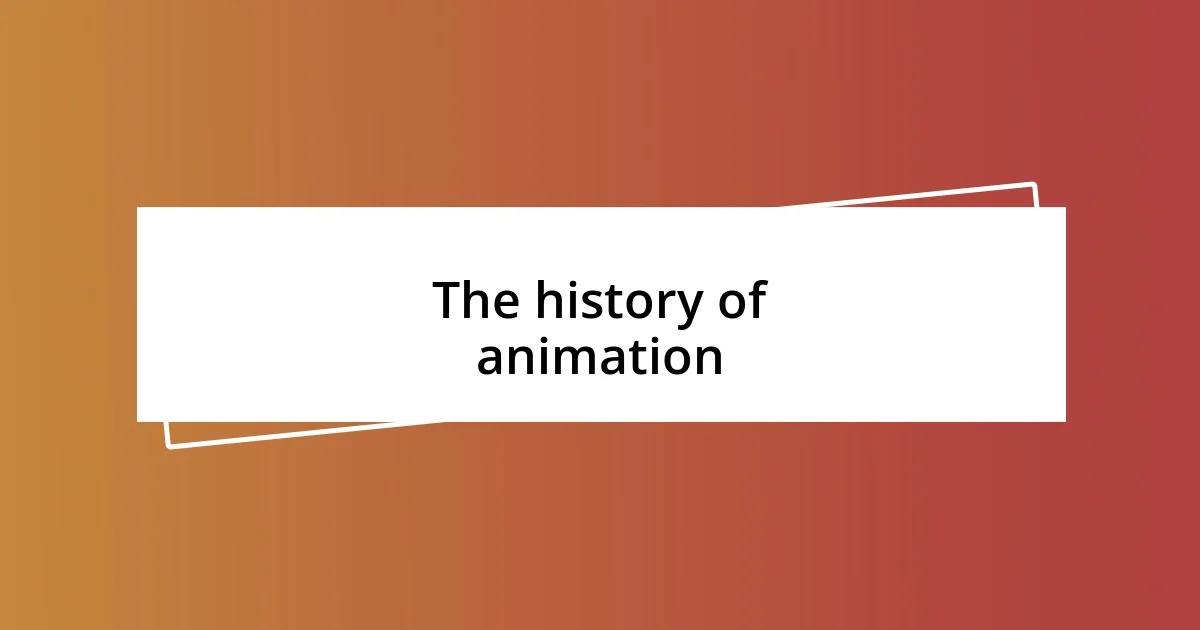
The history of animation
Animation has a rich history that stretches back thousands of years, beginning with ancient cave paintings that depicted movement through sequential images. I remember the first time I saw a flipbook; it was astonishing how a simple series of drawings could create the illusion of life. Can you imagine the thrill of witnessing that transformation for the first time?
As technology advanced, the art of animation evolved significantly. The invention of the zoetrope in the 19th century allowed viewers to experience motion in a way that felt magical. I often think about how captivated audiences must have been, standing around those early devices, eyes wide with wonder. Wasn’t it revolutionary to think that art could come alive?
Fast forward to the early 20th century, when pioneers like Walt Disney pushed the boundaries of what animation could achieve. I still feel a sense of nostalgia when I watch the classics from that era; each frame was crafted with such care and creativity. Have you ever contemplated how those early animated films shaped not just the industry, but also our storytelling traditions?
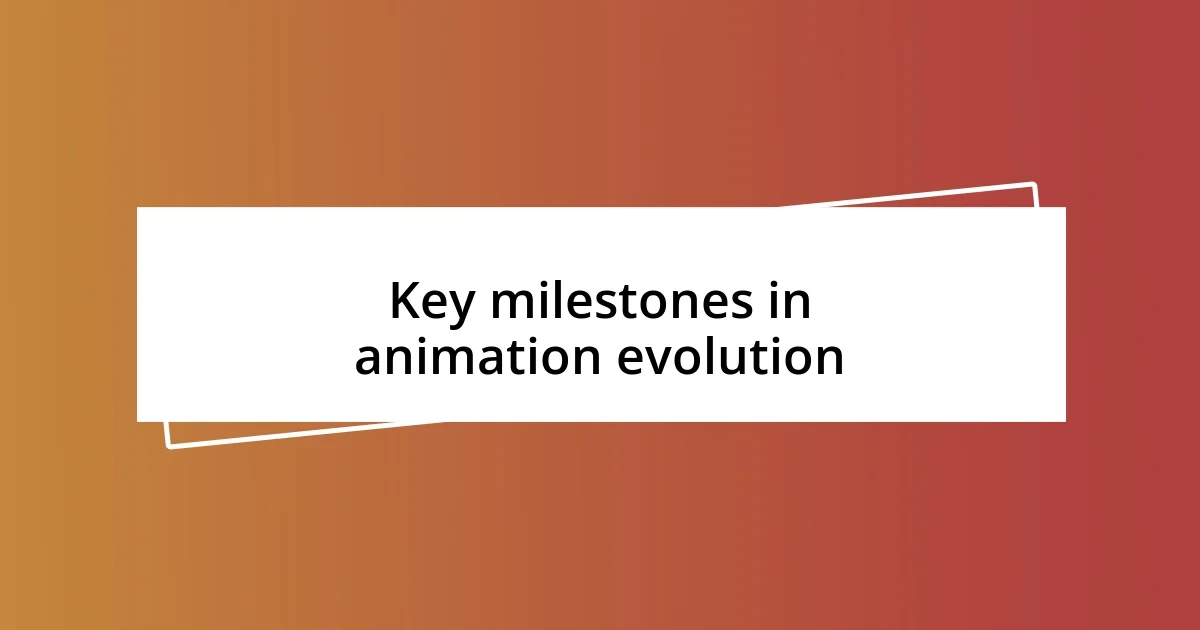
Key milestones in animation evolution
Animation has achieved remarkable milestones over the decades, each reflecting technological advancements and creative breakthroughs. The introduction of sound in animated films during the late 1920s, particularly with Disney’s “Steamboat Willie,” was a watershed moment. I can’t help but think of how that change transformed the viewer’s experience, making animation not just a visual delight but an auditory one as well. It felt like a celebration of creativity, and I remember laughing out loud the first time I heard those iconic sound effects.
In the 1990s, the rise of computer-generated imagery (CGI) marked another critical turning point. Films like “Toy Story” introduced audiences to a new era where animation didn’t just imitate life; it redefined it. I was absolutely fascinated by the vibrant characters and worlds created entirely on a computer. It made me reflect on the endless possibilities that technology could offer to artists.
Today, we see animation pushing boundaries even further with virtual reality (VR) and augmented reality (AR), immersing viewers in ways that were once the domain of science fiction. It’s fascinating to witness how these advancements allow storytellers to engage audiences actively. I often ponder how future generations will perceive animation and the unfolding of their narratives. What incredible journeys lie ahead in this ever-evolving art form?
| Milestone | Year |
|---|---|
| The introduction of sound | 1928 |
| First entirely CGI film “Toy Story” | 1995 |
| Emergence of VR and AR animation | 2020s |
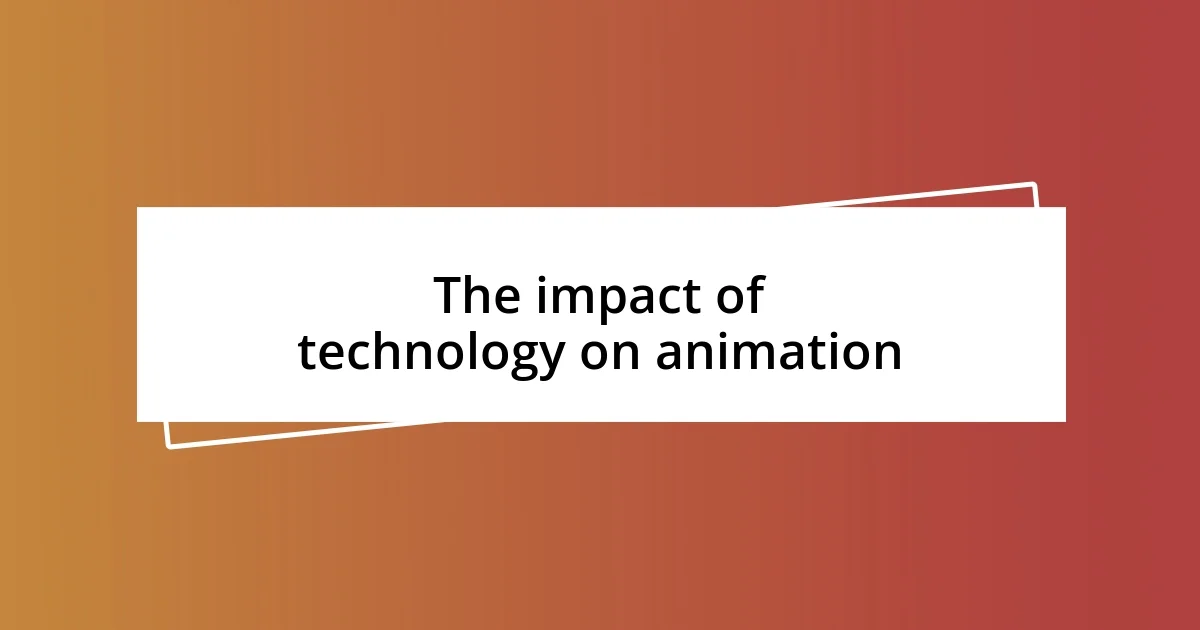
The impact of technology on animation
The landscape of animation has been dramatically reshaped by technology, changing not just how stories are told, but also who gets to tell them. I remember attending an animation festival where creators showcased their work using cutting-edge software. The enthusiasm in the air was contagious, and I couldn’t help but marvel at how user-friendly tools had become. It’s thrilling to think that anyone with a computer can now bring their visions to life, leveling the playing field in a way that was unimaginable just a few decades ago.
Here are some key technological advancements impacting animation:
- Powerful Software: Programs like Blender and Maya have democratized animation production, making it accessible to a wider audience than ever before.
- Realistic Motion Capture: Through technologies like motion capture, animators can create lifelike movements that enhance storytelling.
- Cloud-Based Collaboration: The ability to collaborate in real-time over the internet allows teams to work together seamlessly, regardless of their physical locations.
In the realm of animation, technology isn’t just an upgrade—it’s a catalyst for creativity. My experience with digital tools has shown me how they can ignite a spark in aspiring artists. For example, after experimenting with a simple animation app, I felt a rush of excitement as I transformed my sketches into moving characters. It highlighted how technology can enhance imagination and usher in new artistic styles. Honestly, it’s such a rewarding moment when you realize just how far animation has come, thanks to technological innovation.
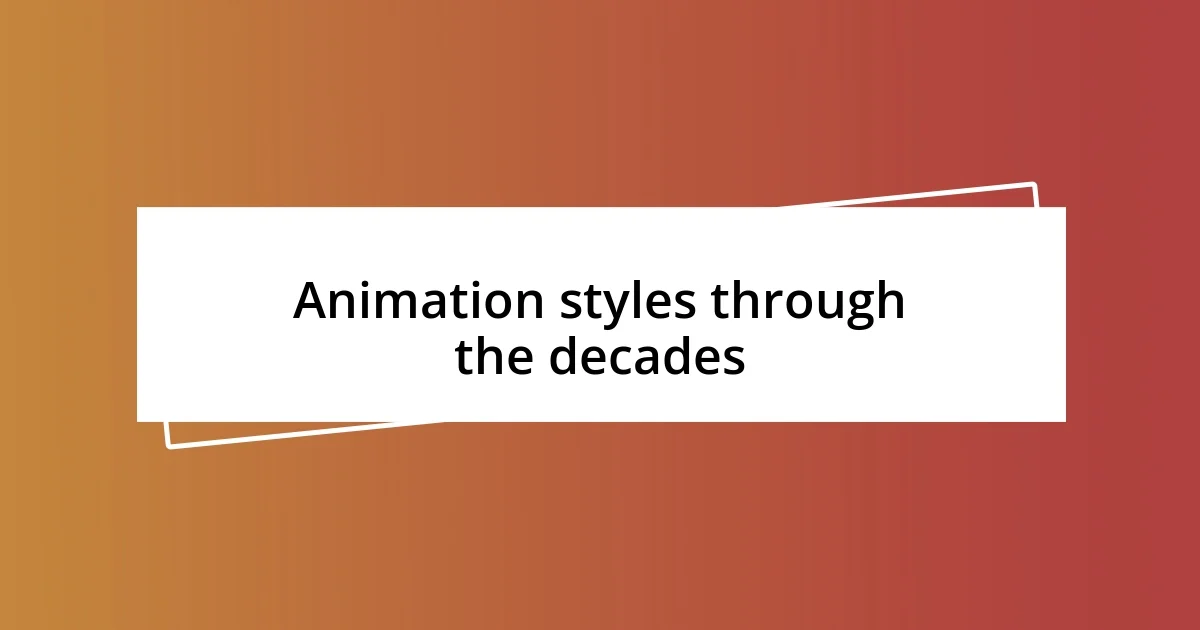
Animation styles through the decades
Animation styles have undergone a fascinating transformation over the decades, with each era showcasing unique techniques and aesthetics. In the early days, the fluid, hand-drawn artistry of the 1930s and 1940s created a charming simplicity that captured hearts. I still remember the first time I saw a classic Warner Bros. cartoon, mesmerized by the characters’ exaggerated movements and whimsical humor. It was a blend of artistry and storytelling that felt so alive, and I can’t help but smile at those memories.
As we moved into the 1980s and 1990s, the use of computer graphics began influencing traditional techniques. I recall watching “The Lion King” and being in awe of how beautifully it combined cel animation with digital effects. The vibrancy of the colors and the smooth transitions felt groundbreaking to me at that time. It transformed my perception of what animation could be, elevating it to a form of art that was both nostalgic and modern, sparking a passion for the craft within me.
Today’s animation styles reflect an incredible diversity, incorporating everything from anime to hyper-realistic CGI. It’s intriguing to see how platforms like Netflix are pushing these boundaries further, allowing unconventional styles to thrive. I often wonder how these varied expressions resonate with different audiences. Do they see them as reflections of their own culture and experiences? This blend of styles keeps the conversation about what animation can be exciting and relevant, continually evolving alongside our societal narratives.
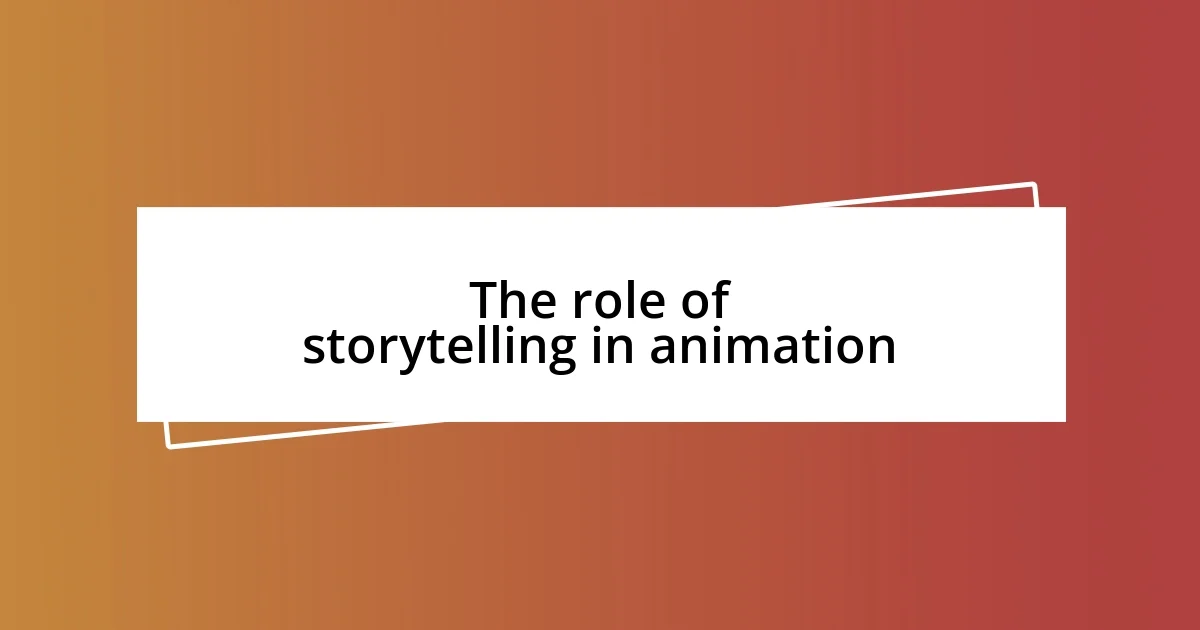
The role of storytelling in animation
The essence of animation lies in its ability to weave narratives that resonate with audiences on a profound level. I often find myself reflecting on how certain animated films can evoke a whirlwind of emotions, transporting viewers to different worlds. Take “Up,” for instance; the opening sequence doesn’t just showcase beautiful animation—it pulls at your heartstrings, illustrating the power of storytelling in just a few minutes. Isn’t it fascinating how a well-crafted story can linger in our minds long after the credits roll?
Storytelling in animation also serves as a bridge between cultures and experiences. When I first watched Studio Ghibli’s “Spirited Away,” I was struck by how its rich, multilayered narrative introduced me to Japanese folklore and values. It brought a sense of wonder and curiosity, compelling me to explore stories from different cultural backgrounds. As we navigate these animated tales, I can’t help but think: how does each story shape our understanding of one another?
Moreover, the evolution of storytelling in animation mirrors our own journeys through life. I remember creating my first short animated film; pouring my thoughts and emotions into the characters gave them a relatable depth. It was exhilarating to see my personal experiences reflected back at me through animation. Stories, after all, are reflections of ourselves. They capture our struggles, dreams, and triumphs, transforming animation into a canvas for shared human experience. Isn’t it intriguing how a simple animated character can embody such profound meaning?
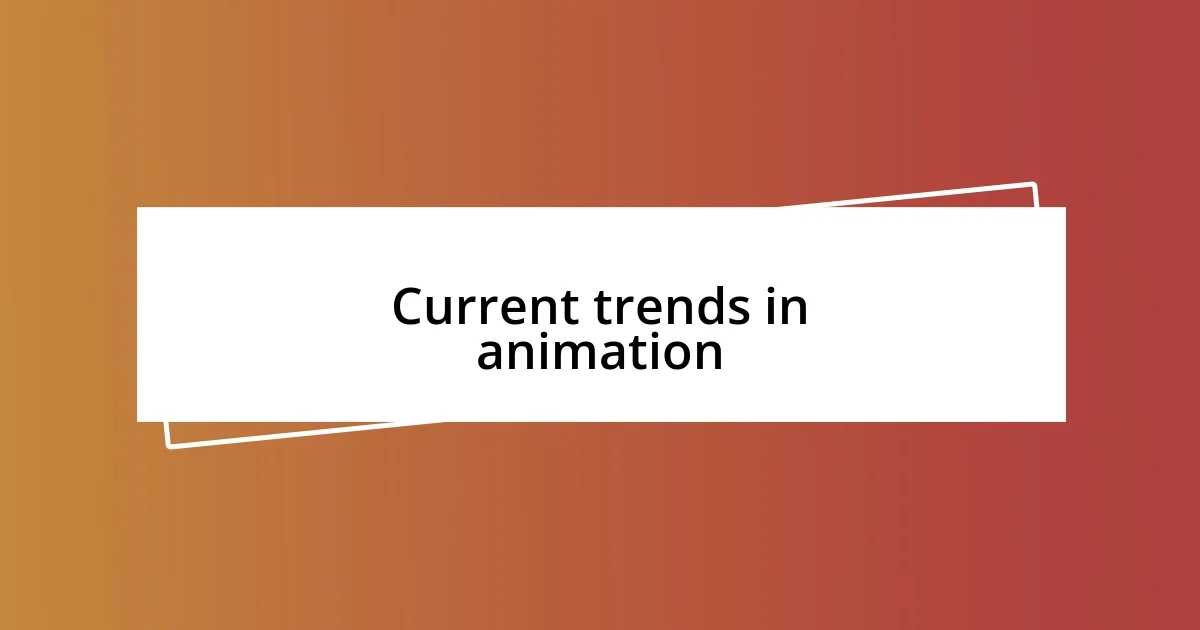
Current trends in animation
Current trends in animation reveal a vibrant landscape that continually reinvents itself. One remarkable trend is the rise of virtual reality (VR) and augmented reality (AR) in the animation sector. I remember my first experience with VR—the immersive sensation of being inside the animated world was exhilarating. It posed the question: how will this technology redefine storytelling and viewer engagement? I believe that as animators embrace VR and AR, they’ll craft experiences that are not just watched, but lived.
Another fascinating trend is the increasing importance of representation and inclusivity in animated content. It has been heartwarming to see characters from diverse backgrounds taking center stage. I can’t help but think back to my childhood when I yearned for characters who looked like me or shared my experiences. Today, animations like “Raya and the Last Dragon” resonate with so many because they reflect a broader spectrum of identities and cultures. This not only enriches our viewing experience but also fosters a deeper connection among different audiences.
Lastly, the resurgence of hand-drawn animation is captivating. While computer-generated imagery (CGI) dominates much of the industry, there’s something magical about the tactile feel of hand-drawn art. I vividly recall watching the film “The Breadwinner” and being struck by its unique visual style, reminiscent of classic animations yet modern in its storytelling. It raises an interesting question: can the charm of traditional techniques coexist with high-tech advancements? In my view, this blend of old and new expands the possibilities of animation, inviting us to appreciate the artistry in all its forms.
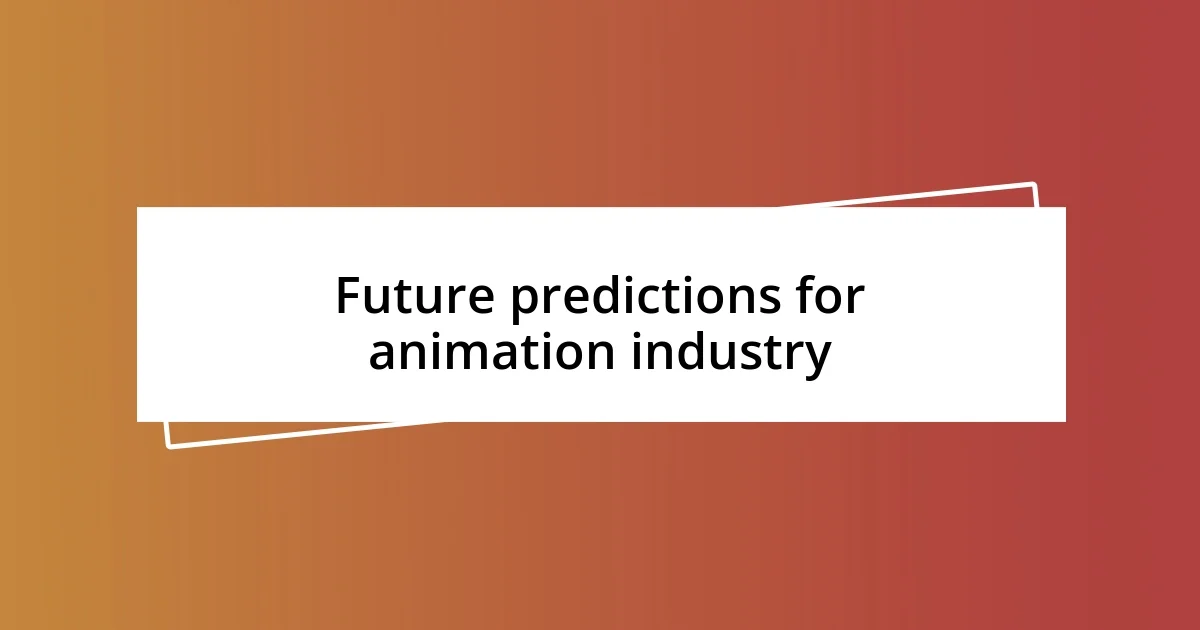
Future predictions for animation industry
The animation industry is poised for remarkable transformation in the coming years. I envision a future where artificial intelligence empowers animators to enhance their creativity. Imagine walking into a studio and working alongside an AI that generates intricate backgrounds while you focus on character development. It sparks curiosity: how might this shift not only streamline production but also redefine what it means to be an animator?
Another exciting prospect is the potential expansion of animated storytelling into interactive formats. I remember playing narrative-driven video games where my choices influenced the outcome. What if animated series adopted similar mechanics, allowing viewers to dive deeper into the narrative? It would create a fascinating dialogue between the creators and the audience, transforming watching into a personally crafted experience.
Moreover, the environmental impact of animation cannot be overlooked. As sustainability becomes a priority across industries, I anticipate a rise in eco-conscious practices among animation studios. Reflecting back, I often felt torn between my love for animation and the industry’s carbon footprint. What if future productions not only entertained but also educated viewers on pressing environmental issues? This shift could resonate deeply, aligning artistic expression with the global responsibility we all share.

